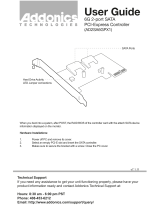
- 17 - Hardware Installation
1-5-1 Dual/3 Channel Memory Conguration
This motherboard provides six DDR3 memory sockets and supports Dual/3 Chan-
nel Technology. After the memory is installed, the BIOS will automatically detect the
specicationsandcapacityofthememory.Dualor3Channelmemorymodemay
double or triple the original memory bandwidth.
The six DDR3 memory sockets are divided into three channels:
Channel 0: DDR3_1, DDR3_2
Channel 1: DDR3_3, DDR3_4
Channel 2: DDR3_5, DDR3_6
1-5 Installing the Memory
DualChannelMemoryCongurationsTable
3ChannelMemoryCongurationsTable
(SS=Single-Sided, DS=Double-Sided, "- -"=No Memory)
Due to chipset limitation, read the following guidelines before installing the memory in Dual or 3 Channel mode.
Dual Channel--
1. Dual Channel mode cannot be enabled if only one DDR3 memory module is installed.
2. When enabling Dual Channel mode with two or four modules, it is recommended that memory of the same
capacity, brand, speed, and chips be used. When enabling Dual Channel mode with two memory modules,
be sure to install them in the DDR3_1 and DDR3_3 sockets.
3 Channel--
1. 3 Channel mode cannot be enabled if only one or two DDR3 memory modules are installed.
2. When enabling 3 Channel mode with three, four or six modules, it is recommended that memory of the
same capacity, brand, speed, and chips be used. When enabling 3 Channel mode with three memory
modules, be sure to install them in the DDR3_1, DDR3_3 and DDR3_5 sockets. When enabling 3 Channel
mode with four memory modules, be sure to install them in the DDR3_1, DDR3_2, DDR3_3 and DDR3_5
sockets.
Read the following guidelines before you begin to install the memory:
• Make sure that the motherboard supports the memory. It is recommended that memory of the
same capacity, brand, speed, and chips be used.
(Go to GIGABYTE's website for the latest supported memory speeds and momery moudles.)
• Always turn off the computer and unplug the power cord from the power outlet before installing
the memory to prevent hardware damage.
• Memory modules have a foolproof design. A memory module can be installed in only one direc-
tion. If you are unable to insert the memory, switch the direction.
DDR3_2
DDR3_1
DDR3_4
DDR3_3
DDR3_6
DDR3_5
DDR3_2 DDR3_1 DDR3_4 DDR3_3 DDR3_6 DDR3_5
- - DS/SS - - DS/SS - - - -
DS/SS DS/SS DS/SS DS/SS - - - -
Two Modules
Four Modules
DDR3_2 DDR3_1 DDR3_4 DDR3_3 DDR3_6 DDR3_5
- - DS/SS - - DS/SS - - DS/SS
DS/SS DS/SS - - DS/SS - - DS/SS
DS/SS DS/SS DS/SS DS/SS DS/SS DS/SS
Three Modules
Four Modules
Six Modules
If only one DDR3 memory module is installed, be sure
to install it in the DDR3_1 or DDR3_3.




















